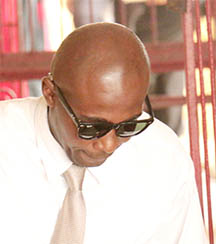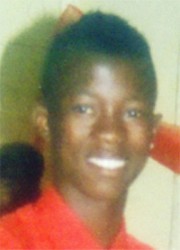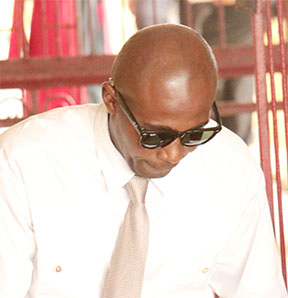Superintendent of Police and forensic analyst Stephen Greaves yesterday testified that he found no traces of gunshot residue on samples taken from the skin of murdered teen Shaquille Grant and his friends, one of whom police had claimed opened fire on them.
Former police constable Terrence Wallace is on trial for the murder of Grant, who was fatally shot at Caesar Street, Agricola, East Bank Demerara on September 11, 2012.
Although police claimed that one of Grant’s friends had opened fire on them, promoting a return of fire, Critchlow said after analysing the samples he found no traces of gunshot residue.

Constable Shawn Critchlow, the crime scene rank who processed and photographed the scene where Grant was killed, had previously testified that he had taken swabbed samples from Grant’s skin, as well as from Grant’s friends, Romel Bollers, Nicholas Eastman, Jamal Henry called, “Tuna,” and Troy Greenidge.
Critchlow had told the court that he had gone to the Georgetown Hospital morgue, where he swabbed the fingers and wrists of both of Grant’s hands as well as his chest and forehead. He had testified that he met Bollers, Eastman, Henry and Greenidge at the Brickdam Station, where he conducted the same swabbing exercise on their fingers and wrists.
Under cross-examination by defence attorney Sonia Parag, Greaves said that it is best if the person taking the samples is trained in forensics but he did not limit his response to that category only. He said that while it is ideal for such a person to be so trained, once the gunpowder is present where the swabbing was done, one can naturally expect to find such residue there.
Earlier, Critchlow, who resumed testimony yesterday, had admitted to Parag that he was not trained to take the samples which he submitted to Greaves. He said at the time he took them, he was working under “instructions.”
Responding to a question from a member of the jury, Critchlow said it was the first time that he had taken swabbed samples and that he has since been asked to take others.
In his evidence-in-chief on May 7, Critchlow had told the court that he had recovered spent shells from the scene. These items and the swabbed samples were, however, not tendered as evidence since Critchlow said he could not find them.
He was unable to tell the court the whereabouts of the spent shells or to say what became of the samples which he said he had lodged at the Brickdam Police Station for safe-keeping. Regarding the swabbed samples however, he could not recall which station they may have been lodged but said that he would have searched.

Justice Navindra Singh had given this witness an opportunity to locate the items. However, when Critchlow returned to the stand yesterday he reported that his search was fruitless.
Testifying at yesterday’s hearing also was government pathologist Dr Nehaul Singh, who gave Grant’s cause of death as multiple gunshot injuries. Noting that the body bore three gunshot wounds, Prosecutor Judith Gildharie-Mursalin asked the doctor which of those wounds could have been the fatal one.
Dr Singh explained that either the shot to the head or the one to the chest could have been fatal. The third wound, he testified, was one to the buttocks and it not have resulted in death with any degree of immediacy, since it was not located in the region of any vital organs.
Responding to a question under cross-examination from the defence, Dr Singh said that he saw no gunshot residue at the time he performed the post-mortem examination.
Also testifying were Sergeant Eon Jackson and retired Assistant Superin-tendent Paulette Lewis.
The trial continues this morning at 9.
The prosecution’s case is that Wallace had ordered Grant and his friends to lie on the ground and while complying Bollers began removing his cell phone from his pocket. At once, there was a bang, which appeared to be a gunshot.
The prosecutor had said in her opening address that Bollers was shot to the head, while Grant was heard saying, “Officer, officer, I get shoot.” She said that what appeared to be other gunshots rang out and following the shooting Bollers was injured and Grant was dead.
The court had heard from Gildharie-Mursalin that according to the police’s version, Bollers was attempting to run away from them and while doing so he had discharged a round at them from a weapon which he had. “The officers claimed that the action by Bollers was the catalyst for their shooting,” Gildharie-Mursalin had said.
In his testimony to the court, however, Bollers insisted that neither he nor any of his friends had any weapon when the police opened fire on them.
Lance Corporal Warren Blue and Special Constable Jamal Lewis were also charged with Grant’s murder but they were never arrested. Warrants had been issued for their arrest. While Lewis remains at large, Blue was subsequently shot and killed during a botched robbery on the East Coast Demerara.






